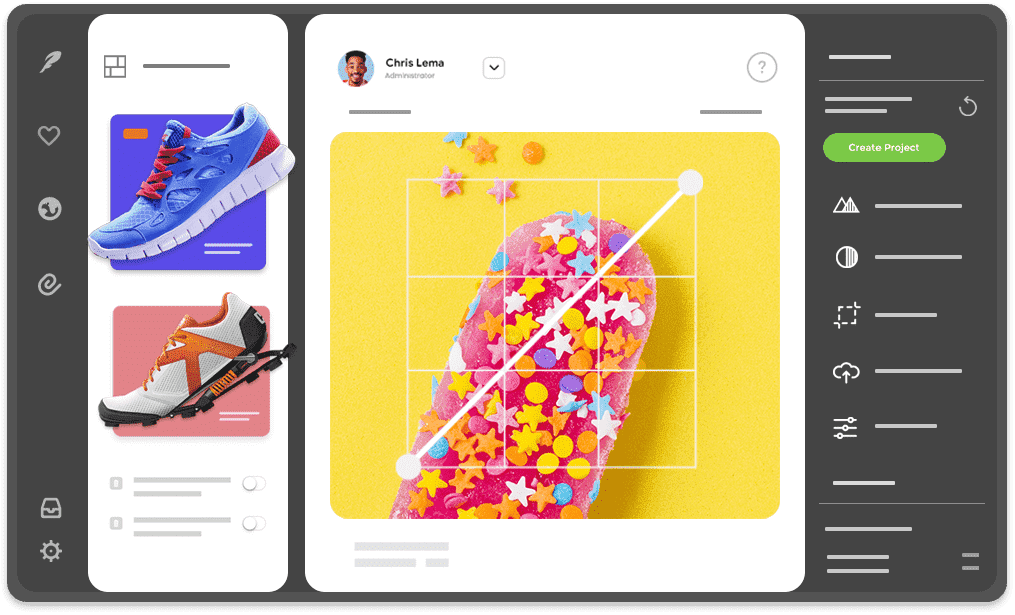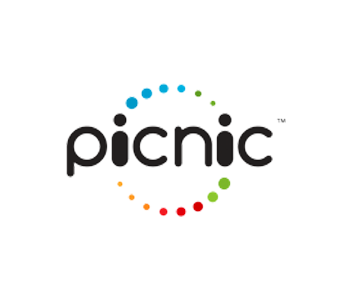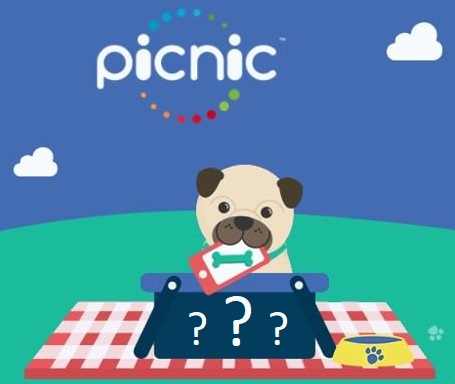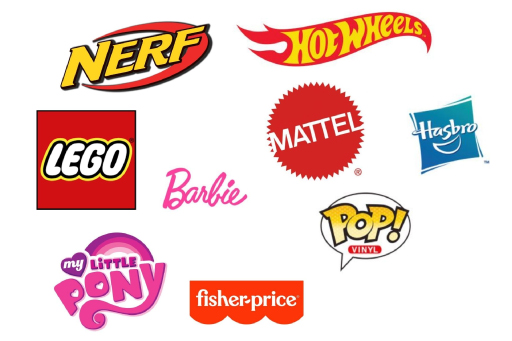6 Hot Trends in Customer Loyalty & Engagement
jodithepug
Posted on September 14, 2023 - 0 Comments

by Steve Bocska
Steve is the CEO and founder of PUG Interactive Inc., a company specializing in maximizing lifetime customer value through relationship orchestration. With over 20 years of experience in the gaming industry, Steve focuses on applying loyalty, engagement, and gamification to enhance user experiences in non-game contexts.
In the fast-paced world of business, staying adaptable and innovative is a key ingredient for success. Keeping up with customer preferences is like tuning a radio. As preferences shift, businesses must adjust the dials to capture the clearest signal or risk ending up with just static. This phenomenon is especially evident when we talk about customer loyalty, engagement, and the whole playground of gamification.
Plus, staying current isn’t just a business strategy; it’s a catalyst for innovation. It’s like having a brainstorming session with the universe, constantly inviting new and creative ideas to mix. It also shows your customers that you’re like that friend who remembers details important about them – especially things they want and need. In the end, embracing the trend train is like future-proofing your business. By adapting, innovating, and staying socially connected with your customers, you’re not just keeping up; you’re setting your business on a path to grow and thrive in the ever-changing world.
Trend 1: Big Data Comes of Age
Customer analytics is no longer just a spreadsheet exercise. It’s a complex, multi-dimensional puzzle that, when assembled correctly, reveals intricate patterns and actionable insights into what makes your customers tick. Welcome to an era where data is the new gold, and insights are the nuggets waiting to be unearthed.
For years, businesses relied heavily on surveys to understand their customers, but this method is slowly taking a backseat with companies now having access to a detective toolkit of multiple data sources, far surpassing the efficacy of a mere magnifying glass. Social media has become a rich source of unsolicited customer opinions and platforms like Twitter, Facebook, and Instagram serve as modern-day town squares where companies can “eavesdrop” on customer conversations. Big Data analytics give businesses the tools to track customer interactions like never before. Every click, swipe, and purchase is a piece of the puzzle, with customers leaving digital footprints that companies can interpret and learn from to deliver highly personalized experiences to their customers. To a customer, it can deliver a similar feeling to having a virtual shopping assistant who knows what you want before you do.
Machine learning and AI are the seers of the modern business world, offering insights into what a customer might want or do next. Streaming services now predict your next binge-worthy series, and airlines are using predictive analytics to customize offers at the exact moment you’re contemplating your next trip. This isn’t just smart business; it’s practically clairvoyant. This transformation in customer analytics is far from a fleeting business trend. It’s a shift that’s here to stay. Companies are navigating these data seas with the precision of an expert captain, aiming for the treasure islands of customer satisfaction and loyalty.
Trend 2: Loyalty Differentiation
The truism that retaining a customer is less costly than acquiring a new one is more relevant today than ever . Over the years, customer loyalty programs have been the go-to strategy for businesses aiming to cultivate repeat customers. But as consumer expectations evolve and marketplaces saturate with competition, businesses find themselves at a crossroads: how do you make your loyalty program stand out?
While the fundamental tenet of customer loyalty programs remains unchanged since the American Airlines Frequent Flyer Program in 1981—rewarding customers for repeat business—the problem arises when loyalty schemes become indistinguishable from one another. In today’s market, a one-size-fits-all approach isn’t just outdated, it’s ineffective.
But there is a simple solution to this: differentiation.
Consider the fast food industry. The usual “buy more, get points” loyalty system has become so commonplace that it’s lost some of its original allure. But creative tweaks, like tiered systems offering unique food items, express lines, or free deliveries, can create a compelling reason for customers to engage (Kumar & Shah, 2004). The idea is to provide unique experiences, not just more freebies. The retail sector has already started heading in a different direction: subscription-based models. Amazon Prime is a stellar example, offering not just loyalty points, but a range of benefits like free shipping and access to exclusive deals (Malthouse et al., 2013). These subscription models don’t just foster loyalty, they also create a recurring revenue stream, making it a win-win for both the customer and the business.
While it’s tempting to go all out in crafting a highly differentiated loyalty program, businesses must be cautious not to alienate customers through over-complexity. The golden rule is that the novelty should enhance, not hinder, the customer experience. With competitive pressures showing no signs of waning, customer loyalty programs need to be more than just points collection schemes. By infusing creativity and thoughtfulness into program structures, companies can elevate their loyalty schemes from mere transactional mechanisms to platforms for sustained customer engagement and brand affinity.
Trend 3: The Age of Gamification
In the ever-evolving landscape of customer engagement, gamification is emerging as a powerful tool to create more immersive and memorable experiences. As consumers increasingly expect a seamless journey across both physical and digital channels, businesses are tapping into the power of fun, challenges, and interactivity to meet and exceed these expectations. In skilled hands, the principles of gamification can enrich customer interactions, boost engagement, and foster long-lasting brand loyalty.
Imagine a fast-food chain integrating a gamified app into its customer experience. By converting routine actions like ordering into game-like challenges, the company not only adds a layer of enjoyment but also encourages app usage and customer loyalty. This gamified approach extends the concept of engagement beyond mere transactions to an emotional level, creating a sense of excitement that resonates with customers. Some businesses are even embracing the concept of “funstration,” a strategic blend of fun and frustration designed to heighten customer engagement. By presenting controlled challenges or obstacles, like increasingly difficult workouts in a fitness app, customers are inspired to overcome them. The result is a heightened sense of achievement and satisfaction, turning what could have been a negative experience into a compelling one.
In the e-commerce space, algorithms are being employed to gamify personalized recommendations, amplifying the shopping experience’s interactive nature. For example, an online bookstore might employ an algorithm that suggests new books based on a customer’s previous reading history. This approach adds an element of surprise and discovery, ultimately making the shopping process more engaging and delightful. However, gamification is a double-edged sword. While it can deepen engagement, the challenge lies in ensuring that the experience remains enjoyable without tipping into frustrating territory. To accomplish this, businesses must possess an in-depth understanding of their target audience and calibrate the level of challenge appropriately.
Trend 4: Bot Backlash
Artificial Intelligence (AI) has undeniably revolutionized customer interactions. Chatbots and self-service platforms are being widely adopted to tackle routine queries, freeing human agents for more complex issues. Yet, as AI weaves its way into more aspects of customer engagement, concerns have been raised about the trade-off between efficiency and the all-important human touch. But businesses today are grappling with how to best integrate AI without eroding the quality of customer interactions.
At first glance, AI-powered customer interactions seem like a win-win for both businesses and customers. Customers enjoy the convenience of 24/7 support for routine queries, while businesses benefit from cost savings and a more effective human workforce. A retail giant, for instance, might deploy chatbots to help customers check orders, product availability, and account balances. The immediate and constant availability of these services augments customer satisfaction while streamlining business operations. However, trouble arises when customer interactions are fully automated. Relying solely on chatbots or self-service platforms can erode the very emotional connection that often sets a brand apart from its competition. For instance, a loyal customer facing a complex issue might expect an empathetic response from customer support. A scripted, robotic interaction could lead to increased dissatisfaction, impacting the long-term relationship with the brand.
The key challenge becomes one of balancing convenience and efficiency with the need for personalized, empathetic customer service. Organizations need to be acutely aware of any scenarios where human intervention is irreplaceable. For example, complex issues such as billing disputes or intricate technical problems are typically better handled by skilled human agents who can provide tailored solutions and emotional support. As businesses march forward in the age of AI, it’s crucial to keep the essence of human interaction alive in customer service.
Trend 5: Catering to Vanity and Prestige
In a world where the consumer is king and personalized experiences are the crown jewels, the concept of hyper-personalization has become the gold standard in customer engagement. Using the power of real-time data analytics and AI, businesses are now creating tailor-made experiences that not only meet customer preferences but also make them feel valued and important. Hyper-personalization is revolutionizing various industries, from retail to aviation, and a sound strategy is integral for deepening brand-customer relationships.
Personalization has been a cornerstone of customer relationship management for years. However, hyper-personalization takes it to a new level, catering to customer vanity and their desire for prestige. When customers feel like a brand understands not just their basic needs but also their aspirations, it creates a bond that goes beyond mere transactional interactions.
In the highly competitive world of fashion retail, brands are pioneering the use of hyper-personalization. By analyzing a customer’s purchase history and browsing behavior, AI algorithms offer personalized product suggestions. For instance, if a customer has previously bought formal wear, the website may highlight a new collection of business attire or exclusive accessories. This proactive engagement serves a dual purpose: satisfying the customer’s fashion needs and making them feel like a valued individual rather than just another consumer. Airlines are also embracing this hyper-personalization trend. Integrated data from past trips, customer feedback, and even social media activity allows airlines to offer unique travel experiences. Imagine a traveler who prefers window seats and has frequently traveled to beach destinations; airlines can offer this traveler a window seat along with personalized destination suggestions for the next beach vacation. The strategy taps into a person’s desire for exclusivity and provides an experience tailored specifically to individual preferences.
Trend 6: Personal Information Woes
In today’s digital landscape, personalization and data privacy have emerged as two sides of the same coin. As organizations invest in creating tailored experiences for their customers, the imperative for robust data security measures is at an all-time high.
Encryption is an essential tool in the toolkit of data security. When sensitive customer information is encrypted, it is transformed into a code that can only be deciphered by someone possessing the corresponding decryption key. In industries like healthcare, where safeguarding sensitive data is a legal requirement under laws like HIPAA, encryption serves as a bulwark against unauthorized access. By employing encryption, healthcare providers can build a foundation of trust, crucial for a patient-doctor relationship. As the frequency and sophistication of cyberattacks escalate, the need for robust malware protection has never been greater. E-commerce platforms, for example, often hold customer payment details and personal information that could be goldmines for hackers. Effective malware protection tools are designed to detect, block, and remove malicious software in real-time, preventing potential data breaches.
Transparency in data protection practices is not just good ethics; it’s also good business. When companies are open about how they collect, use, and protect customer data, it fosters trust and engagement. Social media platforms can set a good example by clearly communicating their data protection policies and offering users granular control over their data sharing preferences. Compliance with regional and global data protection laws like GDPR in Europe or CCPA in the United States is non-negotiable. These regulations offer a legal framework for data protection, requiring organizations to obtain explicit consent before data collection and to provide options for data erasure. Being well-versed in these laws and proactively complying with them not only prevents legal ramifications but also builds trust with the customer base.
Keep Reading...

World of PUG Blog April 3, 2024
PUG Announces Launch of AI-Driven Intelligent Rewards System (IRS)
by Steve BocskaPress ReleaseFOR IMMEDIATE RELEASEPUG Interactive Launches Intelligent Rewards

World of PUG Blog April 3, 2024
PUG Interactive Unveils InsightPulse: A Revolutionary Predictive AI Analytics Dashboard
by Steve BocskaPress ReleaseFOR IMMEDIATE RELEASEPUG Interactive Unveils InsightPulse: A

World of PUG Blog March 21, 2024
Building Bonds: The Future of Family-Focused Loyalty Programs
by Steve BocskaThe children's toy industry, home to iconic brands


